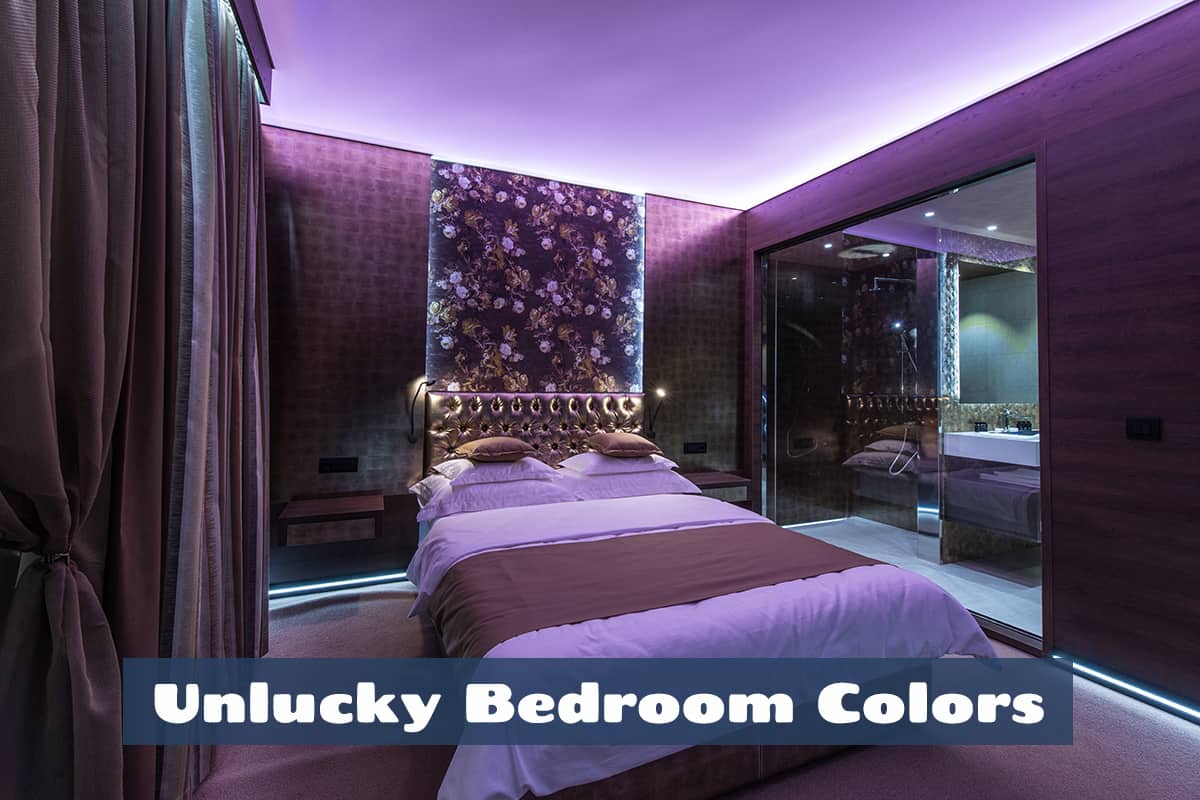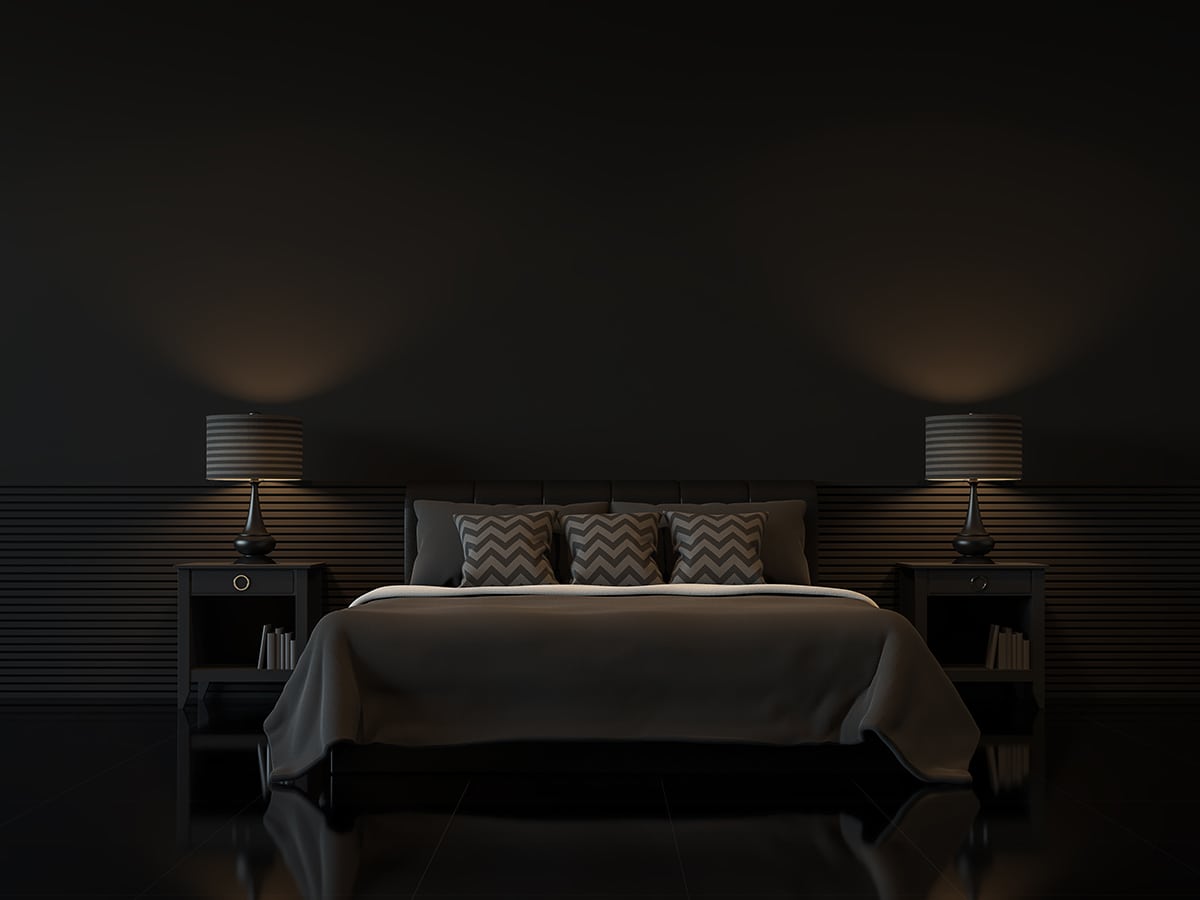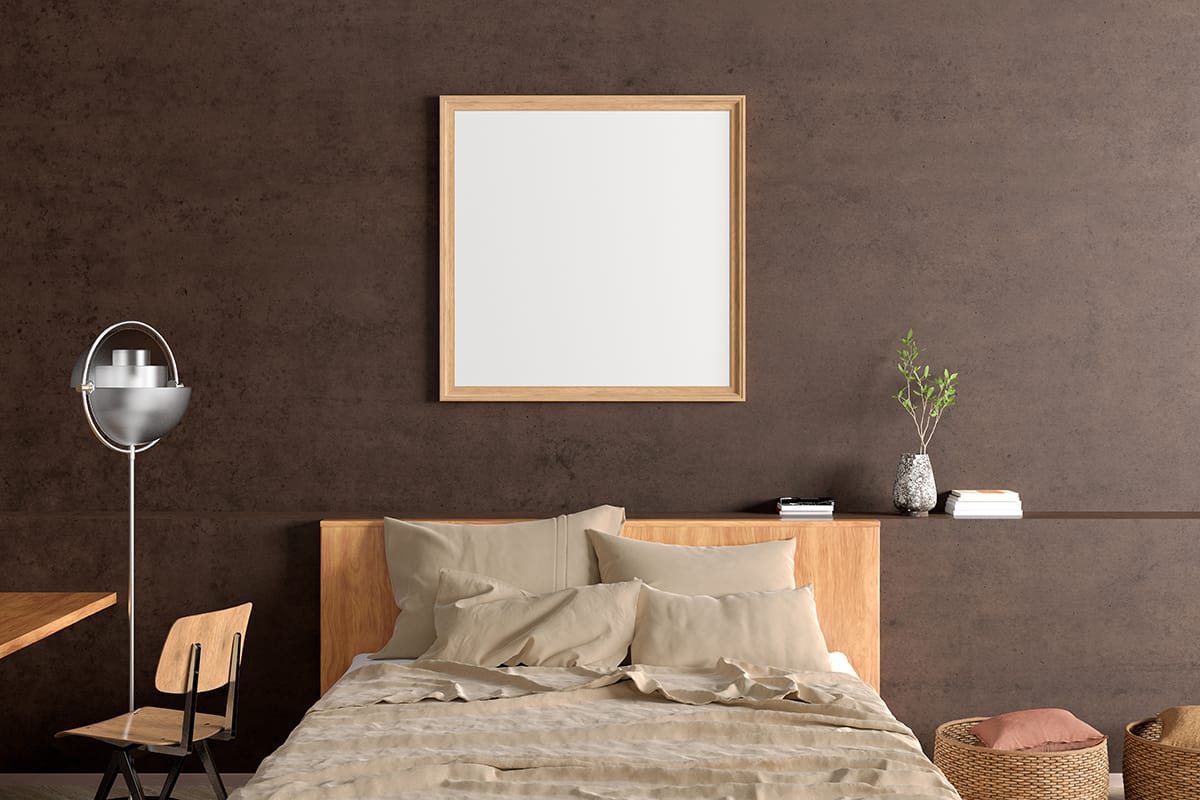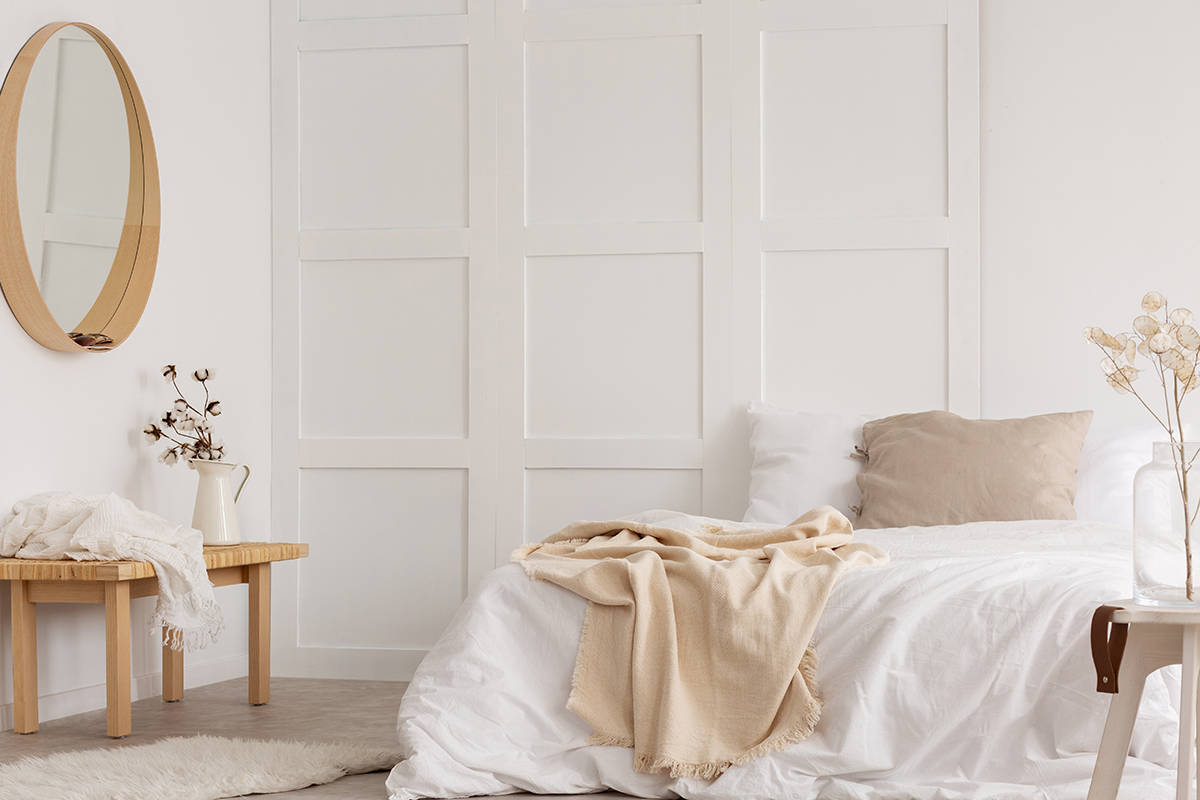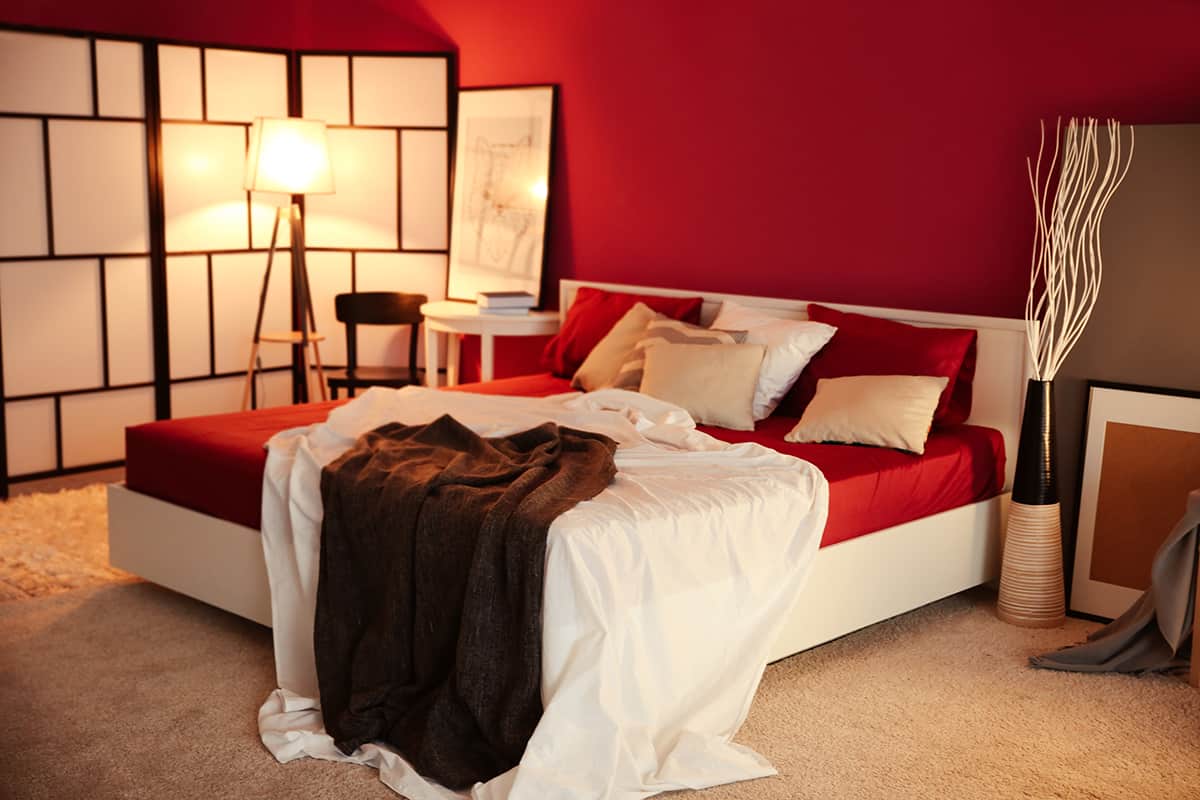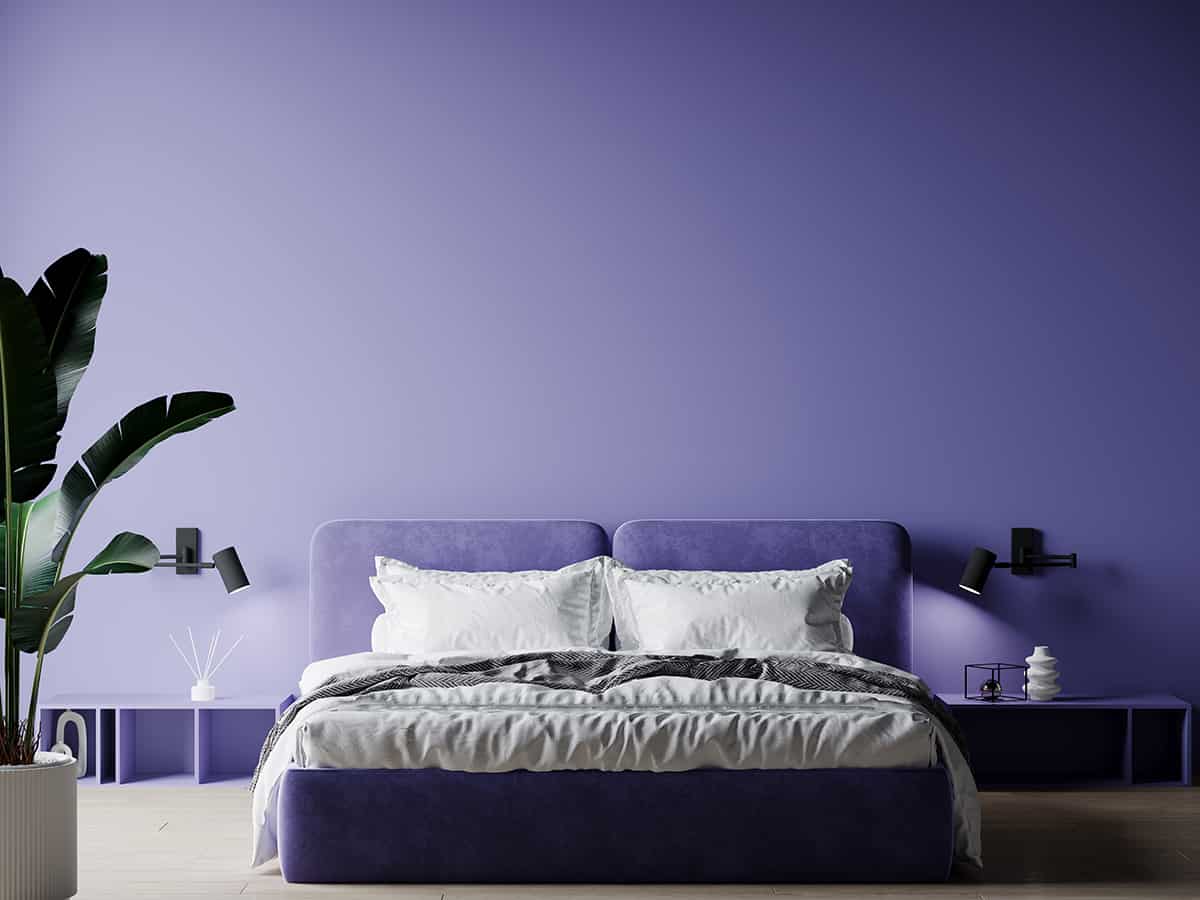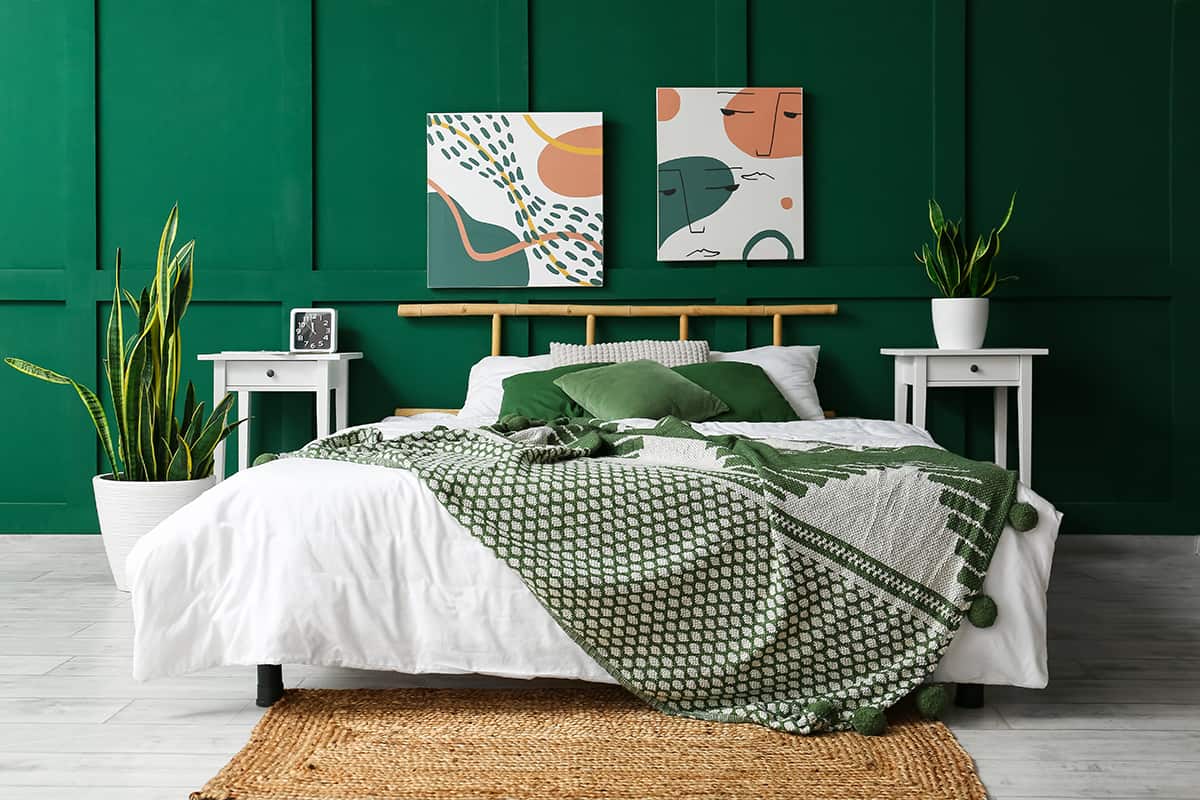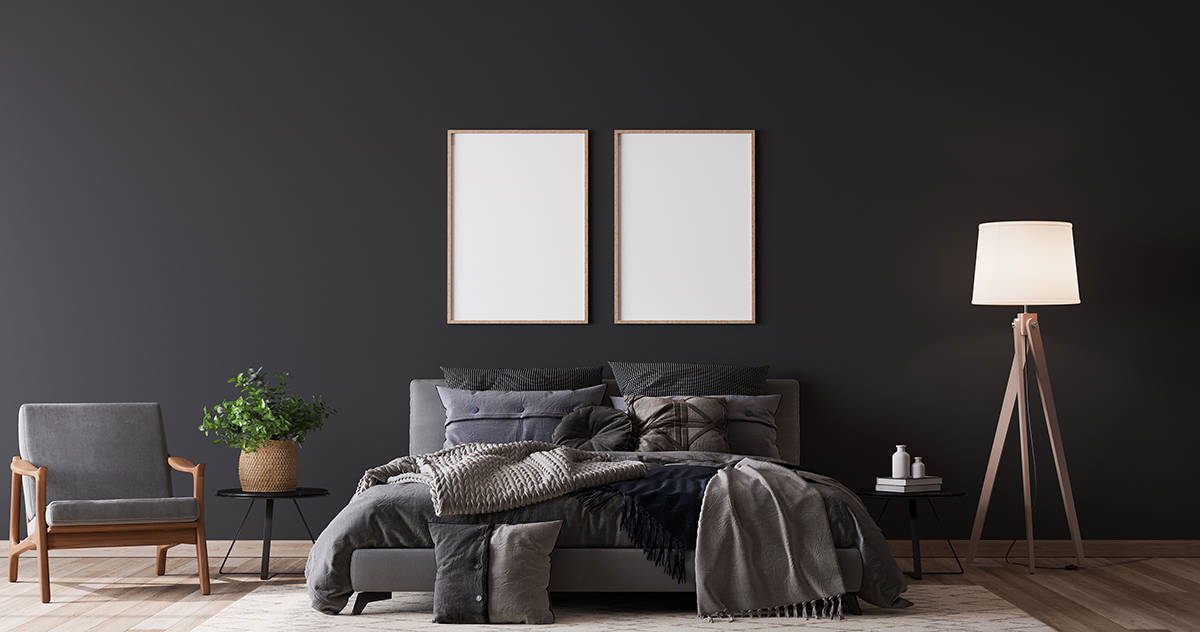If you’re a believer in superstition or agree that some colors can promote misfortune, then you might be interested to know which colors should be avoided in the bedroom. The luck status of many colors can be traced back to their associations in different cultures, so cultural backgrounds and traditions can play a big part in whether or not colors are perceived as unlucky in the bedroom.
Here, we explore the colors that some people consider to be unlucky when used in the bedroom, and look at the reasons behind this.
Table of Contents
Can Colors be Unlucky?
The belief that colors can be unlucky or bring bad luck is rooted in superstition and cultural traditions. In various cultures, there are specific beliefs about lucky and unlucky colors. These beliefs are often based on historical or cultural associations, and they may hold true for some people and not for others.
The perceived notion of a color being unlucky can also vary between individuals, based not only on their cultural background and upbringing, but also on their own experience with certain colors.
For example, if you had a red bedroom as a child and had an unhappy childhood, you may associate red with bad luck. For other people, red may be considered a lucky color. For some people, colors and their meanings are more important than whether they are deemed as lucky or unlucky.
Can I Paint My Bedroom an Unlucky Color?
Whether or not a color is considered unlucky is purely down to perception. One person may view a certain color as unlucky, whereas you may not. The belief of colors as lucky or unlucky colors varies enormously between cultures, so what may be considered an unlucky color by some will be considered lucky by others.
You should paint your bedroom in a color that feels good to you, regardless of what other people may see that color as. Unlike other areas of the home, which are common spaces, or areas where we may entertain guests, our bedrooms are our personal spaces where we don’t need to worry about pleasing other people. With this in mind, choose a paint color based on your own personal preferences.
Colors Considered Unlucky for the Bedroom
Black
The perception of black as an unlucky color varies significantly from culture to culture. In many Western cultures, black is not inherently considered an unlucky color.
Instead, it is often associated with qualities like sophistication, formality, and elegance. Many people wear black clothing for formal occasions, and black is commonly used in fashion and home design to create a timeless and classic look.
However, black can also be associated with death, depression, and sadness. For example, in Western cultures, black is traditionally worn at funerals and is associated with mourning and loss.
When black is used as the main color in a bedroom color scheme, it can make the space feel heavy, and ultimately sad. While you might think a room painted black might help you sleep, it can actually have the opposite effect because it inspires feelings of fear and anger, which can affect your overall wellbeing.
Tara Bennet, a clairvoyant from Mediumchat, explains that “’black, regardless of the undertone, brings a heavy feeling to a bedroom, clouding spirituality and blocking positivity”.
Brown
Like black, brown is considered by some to be a dark and depressing color that will bring your mood down when used in a bedroom. For some, it is the darkness of brown that makes it problematic for use in the bedroom, rather than the hue of the color itself.
In many cultures, brown is associated with earth, stability, and reliability. It is often linked to natural elements like wood and soil, which can be seen as grounding and comforting.
Brown is a common color used in interior design and fashion, and it is often used to create a warm and inviting atmosphere. However, in some contexts, brown may be associated with dirt, decay, or poverty, which can lead to negative connotations.
White
White is a color often associated with purity, cleanliness, and simplicity, and it is commonly used for weddings and special celebratory occasions.
However, in some cultures, white may be associated with death, mourning, or funerals, making it a more somber color that isn’t appropriate for a bedroom. For example, in many Asian cultures, white is traditionally worn at funerals and is associated with mourning and grief. Similarly, in some Middle Eastern cultures, white may be associated with death and misfortune.
Tara Bennet from Mediumchat notes that white is an especially poor choice as a color in the bedroom for couples who are trying to start a family, because it represents stirility. She explains: “White is the cleanest of all colors and represents purity. Typically white creates boosts positivity throughout the house but should be avoided in the bedroom.”
Red
Red is often associated with positive attributes like love, passion, and energy, but it can also have negative associations that make it a questionable choice as a decor color in the bedroom.
Red is sometimes associated with anger, aggression, and hostility. This association may stem from the physiological effects of the color, as it is known to increase heart rate and blood pressure. Since the bedroom is a place for rest and relaxation, red can be deemed a poor color choice for this room of the home.
Red is also used to signal danger, such as in traffic signs, emergency exit signs, and warning labels. This is because red is highly visible and can grab attention, making it an effective color for signaling potential hazards.
The link between red and danger makes it an unlucky color to use in the bedroom, as it usually proceeds an emergency or disaster. Red is also the color of blood, and therefore it is linked to violence and horror. Using this color in a bedroom can make it feel dangerous and unlucky.
Purple
Purple is a color more commonly associated with positive attributes, such as wealth, royalty, and opulence, however in some cultures it is also linked to death and mourning.
Some people believe that these negative connotations make purple an unlucky color to use in the bedroom, because it possesses bad vibes which can block good fortune from appearing in your life. If you want to welcome good vibes and good luck into your home and into your family, then purple could be a color to avoid using in a bedroom color scheme.
Green
Green is an enormously popular color in home decor right now, typically being associated with more positive elements such as nature, and new growth. However, there are also some negative connotations of the color green which can lead some people to considering it as an unlucky color.
One of the most common negative associations with green is envy and jealousy. The phrase “green with envy” reflects this association, suggesting that someone who is envious or jealous might appear physically or emotionally green.
Green can be associated with illness or nausea, particularly when used in contexts related to toxic substances or bodily ailments. For example, green is sometimes used to represent poison in literature and art.
Yellow
Yellow is widely considered as a bright and cheerful color, being associated with sunlight and happiness. However, it can also be linked to more negative emotions, and in fact some people believe it can inspire anxiety and restlessness. Since the bedroom is somewhere we go to relax, using a color that may increase feelings of anxiety could be considered an unfortunate choice.
There are also other negative connotations of yellow which could make it a poor choice of color for use in the bedroom. For example, yellow is commonly used for caution signs and warning labels, such as those on wet floors or hazardous materials.
As a result, yellow can be associated with alertness and potential danger. In some cases, yellow may be linked to illness or disease, particularly when used to represent symptoms like jaundice, which causes a yellowing of the skin and eyes.
Dark Gray
Gray is a universally popular color in interior design, and it comes in a huge range of shades and undertones that can make it incredibly versatile. One of the shades of gray you might wish to stay away from in the bedroom though, is dark gray. This has more to do with the darkness of the color, rather than the color itself.
Some people feel that dark colors, or those colors that are close to black, are emotionally draining and can have an unfortunate impact on the lives of those who spend a lot of time around those colors.
Dark gray can be viewed as depressing and heavy, which in turn can cause similar negative emotions to show up in your every day life. If you love gray and want to use this color in your bedroom, instead consider a lighter shade of gray such as dove gray or pale blue-gray for a more relaxing vibe.
